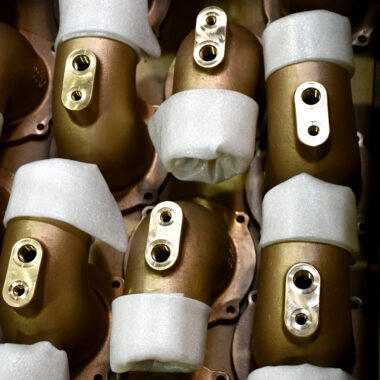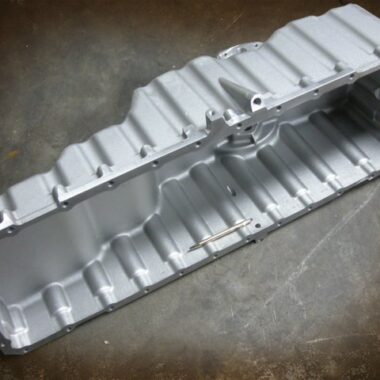Elevate Your Craft: Advanced Techniques for Casting Aluminum Illinois
Elevate Your Craft: Advanced Techniques for Casting Aluminum Illinois
Blog Article
Advancement in Light Weight Aluminum Spreading: Cutting-Edge Techniques for Modern Creators
Aluminum spreading, a typical manufacturing process, has seen an exceptional makeover recently with the introduction of advanced methods that deal with the needs of modern-day creators. From advanced 3D printing methods that push the limits of style to the combination of automation and robotics simplifying manufacturing, the landscape of light weight aluminum spreading is advancing swiftly. Nonetheless, what truly sets these innovations apart are the sustainable aluminum alloys being developed and the high-pressure die spreading strategies that are revolutionizing the sector. Join us as we explore the center of light weight aluminum spreading advancement, where innovation meets creativity to redefine what is feasible on the planet of metal casting.

Advanced 3D Printing Methods
Making use of cutting-edge additive manufacturing processes, progressed 3D printing strategies have actually revolutionized the production of elaborate and personalized light weight aluminum parts. By employing high-precision printers that can deal with aluminum powders or filaments, producers can produce complicated geometries and layouts that were formerly unattainable via typical production methods.
One of the key advantages of advanced 3D printing in aluminum component production is the ability to achieve light-weight yet sturdy frameworks. This is specifically beneficial in sectors such as aerospace and automotive, where weight decrease is essential for enhancing fuel efficiency and general efficiency. Furthermore, the personalization choices provided by 3D printing permit the production of unique and customized components that satisfy particular requirements, leading to improved capability and efficiency.
Additionally, the efficiency of the 3D printing procedure decreases material waste and decreases the overall manufacturing time, making it an economical service for manufacturing light weight aluminum elements. As technology remains to development, the capabilities of 3D printing in light weight aluminum manufacturing are expected to increase, providing even higher possibilities for technology in different industries.
Computer-Aided Layout Developments
With the advancements in innovative 3D printing methods for aluminum parts, the integration of Computer-Aided Layout (CAD) software application has actually ended up being significantly essential in driving innovation and effectiveness in the manufacturing process. CAD technologies have changed the method developers and engineers produce light weight aluminum casting mold and mildews by offering accurate electronic modeling capabilities. These software application devices enable the production of intricate styles and simulations that maximize the casting process, leading to greater quality elements.
Among the key benefits of CAD in light weight aluminum spreading is the ability to find possible issues early in the style stage, lowering costly errors and remodel throughout manufacturing. By simulating the casting process essentially, developers can analyze elements such as cooling prices, product circulation, and architectural honesty before a physical mold is created. This positive technique not just conserves time and sources yet additionally ensures that the final aluminum components meet the preferred specs.
Additionally, CAD software program makes it possible for fast models and alterations to layouts, promoting quick prototyping and modification to fulfill details needs. By leveraging CAD technologies in light weight aluminum spreading, manufacturers can streamline their processes, improve product high quality, and stay at the forefront of technology in the industry.
High-Pressure Pass Away Casting Methods
High-pressure die casting techniques are extensively identified for their effectiveness and precision in producing complex light weight aluminum parts. By using high pressure to force liquified light weight aluminum into elaborate molds at quick speeds, this technique permits the production of dimensionally accurate and thorough components. One of the vital benefits of high-pressure die casting is its capacity to create parts with slim wall surfaces and fine information, making it excellent for applications where light-weight yet strong parts are required.
The procedure begins with the preparation of the die, which is typically made from set tool steel and contains 2 halves that create the desired component form. The molten light weight aluminum is after that injected right into the die cavity under high pressure, making certain that the material fills up all the detailed functions of the mold and mildew. As soon as the aluminum strengthens, the die opens up, revealing the finished component all set for any needed post-processing.
High-pressure die spreading is commonly made use of in various markets, consisting of auto, aerospace, and electronics, where high-volume production of complicated light weight aluminum components is required. casting aluminum illinois. Its capability to provide limited resistances, excellent surface finishes, and economical production makes it a recommended choice for modern developers intending to introduce in light weight aluminum spreading strategies
Lasting Light Weight Aluminum Alloys Development

One technique to lasting light weight aluminum alloy development includes incorporating recycled aluminum web content into the alloy structure. By making use of recycled aluminum, makers can reduce energy intake and greenhouse gas emissions connected with key aluminum production. In addition, recycling aluminum assists draw away waste from landfills, adding to a much more round economy.
Moreover, scientists are discovering new alloying aspects and handling strategies to boost the sustainability of aluminum alloys. By optimizing alloy structures and producing procedures, it is feasible to boost the recyclability, sturdiness, and general ecological efficiency of light weight aluminum items.

Automation and Robotics Assimilation
In the world of sustainable light weight aluminum alloys advancement, the integration of automation and robotics is changing producing processes, leading the way for raised effectiveness and precision in manufacturing. Automation and robotics are improving typical casting strategies, using numerous advantages to developers in the light weight aluminum industry. By including automation into the spreading process, repeated tasks that were when labor-intensive can currently be effectively taken care of by robotic systems, lowering the risk of human mistake and increasing general productivity.
Automated systems can work all the time, guaranteeing a continual production cycle that reduces downtime and makes the most of result. Robotics integration enables complex molds and complex layouts to be produced with unequaled precision, meeting the demands of contemporary makers for top quality light weight aluminum parts. Furthermore, using automation in casting operations advertises a more secure working setting by minimizing the exposure of workers to harmful problems.
Verdict
Finally, the advancements in aluminum casting have revolutionized the manufacturing industry. Advanced 3D printing techniques, computer-aided design developments, high-pressure die casting methods, sustainable aluminum alloys growth, and automation and robotics combination have all contributed to the modernization of the casting process. These cutting-edge techniques have actually made it possible for makers to generate facility and high-grade light weight aluminum items effectively and efficiently. The future of aluminum casting is brilliant with constant technology and technological improvements.
What absolutely sets these advancements apart are the lasting light weight aluminum alloys being established and the high-pressure die spreading strategies that are transforming the market. Join us as we discover the center of light weight aluminum spreading innovation, where modern technology meets imagination to redefine what is feasible in the world of metal spreading.
One approach to sustainable click for source light weight aluminum alloy advancement includes incorporating recycled aluminum web content into the alloy structure - casting aluminum illinois. By using recycled aluminum, producers can decrease power usage and greenhouse gas emissions connected with key light weight aluminum production. Advanced 3D printing methods, computer-aided design developments, high-pressure die casting techniques, lasting light weight aluminum alloys growth, and automation and robotics combination have all contributed to the modernization of the casting process
Report this page